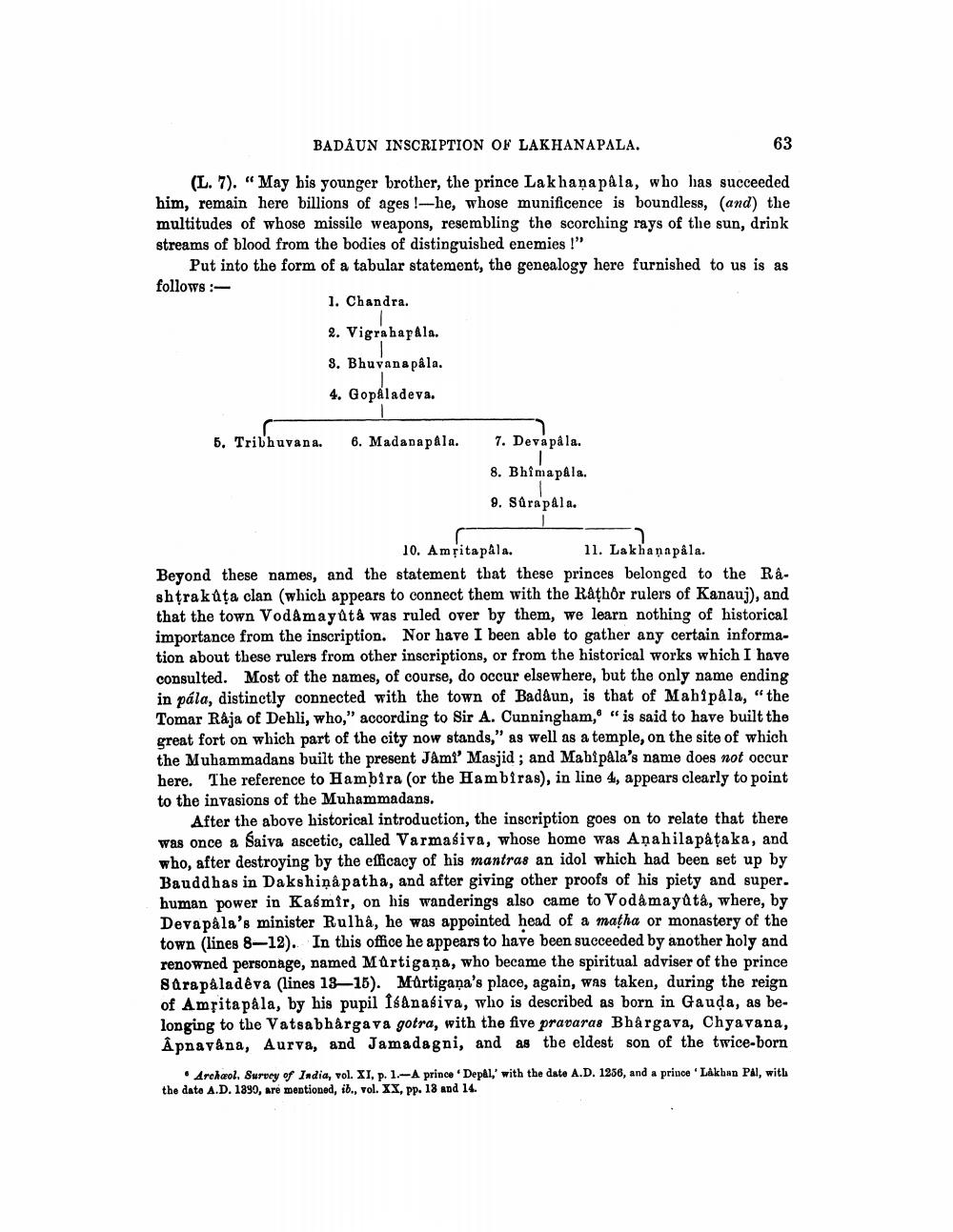________________
BADÅUN INSCRIPTION OF LAKHANAPALA.
63
(L. 7). "May his younger brother, the prince Lakhanapala, who has succeeded him, remain here billions of ages !--he, whose munificence is boundless, (and) the multitudes of whose missile weapons, resembling the scorching rays of the sun, drink streams of blood from the bodies of distinguished enemies !"
Put into the form of a tabular statement, the genealogy here furnished to us is as follows:
1. Chandra. 2. Vigrahapala. 8. Bhuvana pala. 4. Gopåladeva.
5. Tribhuvana.
6. Madanapala.
7. Deva pala.
8. Bhîmapala. 9. Sûra pala.
10. Amțitapala. 11. Lakhannpåla. Beyond these names, and the statement that these princes belonged to the Rashtrakuța clan (which appears to connect them with the Rathor rulers of Kanauj), and that the town VodAmayata was ruled over by them, we learn nothing of historical importance from the inscription. Nor have I been able to gather any certain information about these rulers from other inscriptions, or from the historical works which I have consulted. Most of the names, of course, do occur elsewhere, but the only name ending in pála, distinctly connected with the town of Badaun, is that of Mahipala, "the Tomar Raja of Dehli, who,” according to Sir A. Cunningham, " is said to have built the great fort on which part of the city now stands," as well as a temple, on the site of which the Muhammadans built the present Jami' Masjid ; and Mabipala's name does not occur here. The reference to Hambira (or the Hambiras), in line 4, appears clearly to point to the invasions of the Muhammadans.
After the above historical introduction, the inscription goes on to relate that there was once a Saiva ascetic, called Varmaśiva, whose home was Anahila pataka, and who, after destroying by the efficacy of his mantras an idol which had been set up by Bauddhas in Dakshiņa patha, and after giving other proofs of his piety and super. human power in Kasmir, on his wanderings also came to Voda mayata, where, by Deva pala's minister Rulha, he was appointed head of a matha or monastery of the town (lines 8-12). In this office he appears to have been succeeded by another holy and renowned personage, named Martigaņa, who became the spiritual adviser of the prince Sara påladeva (lines 13-15). Martigana's place, again, was taken, during the reign of Amrita pala, by his pupil Isanasiva, who is described as born in Gauda, as belonging to the Vatsabhârgava gotra, with the five pravaras Bhargava, Chyavana, Apnavâna, Aurva, and Jamadagni, and as the eldest son of the twice-born
. Archaol. Survey of India, vol. XI, p. 1.- A prince Depal,' with the date A.D. 1256, and a prince 'Lakban Pal, with the data A.D. 1890, are mentioned, ib., vol. XX, pp. 13 and 14.




